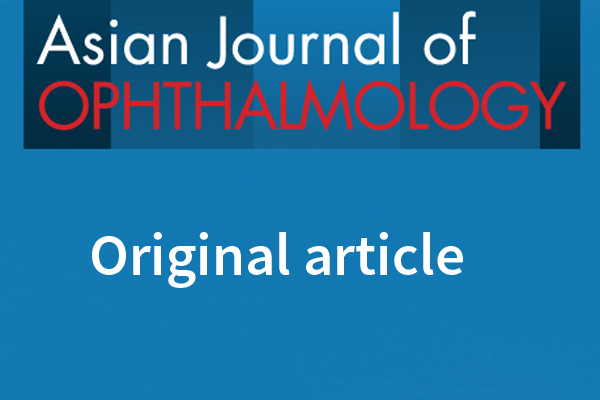SITA standard testing with Humphrey visual field analyzer versus full threshold testing with frequency doubling perimetry: a comparison of patient preference and perception
Abstract
Purpose: To compare patient preference for Swedish Interactive Threshold Algorithm (SITA) standard 24-2 protocol in Humphrey visual field analyzer (HVF) and full threshold N-30 protocol in frequency doubling perimetry (FDP) by primarily evaluating their perception about the test procedure and test targets along with surveying the factors that influence the patient concentration during perimetry and elements that determine the level of perimetry task difficulty.
Methods: This study enrolled a subset of subjects from the Chennai Glaucoma Study. Each subject underwent a comprehensive ophthalmic examination after which they were randomly allocated to perform HVF and FDP with a 30-minute interval between the two procedures. SITA standard 24-2 protocol in HVF and full threshold N-30 protocol in FDP were used. This was followed by the administration of a questionnaire that mainly assessed the components such as (a) the patient preference for test procedure and test targets, (b) the factors influencing the patient concentration during perimetry performance, and (c) the impression about the level of perimetry task difficulty. The patient responses from the survey for each of the subcategories were obtained and analyzed using Chi-square test.
Results: A total of 42 subjects with a mean age of 59.7 (SD 9.7) years were included, among which 18 (42.86%) were male and 24 (57.14%) were female. Thirty-two (76.19%) subjects felt both FDP and HVF were easy to perform, eight subjects (19.05%) felt that both perimetry techniques were difficult to perform, and two subjects (4.76%) found FDP procedure was easier than HVF, whereas the distribution was not statistically significant (Chi-square, p = 0.7). Pressing the button as a response to peripheral stimulus perception and inability to maintain steady central fixation for prolonged duration were the most commonly reported factors that influenced the level of difficulty of the perimetry tasks. A dark room ambience set for performing HVF was preferred by 32 (76.20%) subjects.
Conclusion: There was no significant difference in the patient preference for test procedure and peripheral test targets. A black central fixation as in FDP and dark room ambience set for HVF were preferred.
References
Kim C, Radcliffe NM. One year of glaucoma research in review: 2011 to 2012. Asia Pac J Ophthalmol. 2012;1(6):364-373.
Foster PJ, Buhrmann R, Quigley HA, Johnson GJ. The definition and classification of glaucoma in prevalence surveys. Br J Ophthalmol. 2002 Feb 1;86(2):238-242.
Johnson CA, Samuels SJ. Screening for glaucomatous visual field loss with frequency-doubling perimetry. Invest Ophthalmol Vis Sci. 1997;38:413-425.
Anderson AJ, Johnson CA. Frequency doubling technology perimetry. Ophthalmol Clin North Am. 2003;16(2):213-225.
Casson R, James B, Rubinstein A, Ali H. Clinical comparison of frequency doubling technology perimetry and Humphrey perimetry. Br J Ophthalmol. 2001;85:360-362.
Leeprechanon N, Giangiacomo A, Fontana H, Hoffman D, Caprioli J. Frequency-doubling perimetry: comparison with standard automated perimetry to detect glaucoma. Am J Ophthalmol. 2007;143:263-271.
Arvind H, Paul PG, Raju P, et al. Methods and design of the Chennai glaucoma study. Ophthalmic Epidemiol. 2003;10(5):337-348.
Chylack LT Jr, Leske MC, McCarthy D, Khu P, Kashiwagi T, Sperduto R. Lens opacification classification system II (LOCS II). Arch Ophthalmol. 1989;107:991-997.
Birt CM, Shin DH, Samudrala V, Hughes BA, Kim C, Lee D. Analysis of reliability indices from Humphrey visual field tests in an urban glaucoma population. Ophthalmology. 1997;104(7):1126-1130.
Gothwal VK, Thomas A. Rasch analysis of the quality of life and visual function questionnaire. Optom Vis Sci. 2009;86:834-844.
Thomas RS, Bhat JP, Muliyil JP, Parikh R, George R. Frequency doubling perimetry in glaucoma. J Glaucoma. 2002;11(1):46-50.
Lamparter J, Aliyeva S, Schulze A, Berres M, Pfeiffer N, Hoffmann EM. Standard automated perimetry versus matrix frequency doubling technology perimetry in subjects with ocular hypertension and healthy control subjects. PLOS one. 2013;8(2):e57663.
Liu S, Yu M, Weinreb RN, Lai G, Lam DS, Leung CK. Frequency doubling technology perimetry for detection of the development of visual field defects in glaucoma suspect eyes-a prospective study. JAMA Opthalmol. 2014;132(1):77-83.
Barkana Y, Zadok D, Morad Y, Avni I. Visual field attention is reduced by concomitant hands free use of a cellular telephone. Am J Ophthalmol. 2004;138(3):347-353.
Suresh KP. An overview of randomization techniques: an unbiased assessment of outcome in clinical research. J Human Reprod Sci. 2011 Jan;4(1):8.

Copyright (c) 2020 Najiya Sundus Kadavath Meethal, Velumuri Lokapavani, Rashima Asokan, Lingam Vijaya, Ronnie Jacob George

This work is licensed under a Creative Commons Attribution 4.0 International License.
Authors who publish with this journal agree to the following terms:
- Authors retain copyright and grant the journal right of first publication, with the work twelve (12) months after publication simultaneously licensed under a Creative Commons Attribution License that allows others to share the work with an acknowledgement of the work's authorship and initial publication in this journal.
- Authors are able to enter into separate, additional contractual arrangements for the non-exclusive distribution of the journal's published version of the work (e.g., post it to an institutional repository or publish it in a book), with an acknowledgement of its initial publication in this journal.
- Authors are permitted and encouraged to post their work online (e.g., in institutional repositories or on their website) prior to and during the submission process, as it can lead to productive exchanges, as well as earlier and greater citation of published work (See The Effect of Open Access).


